.png)
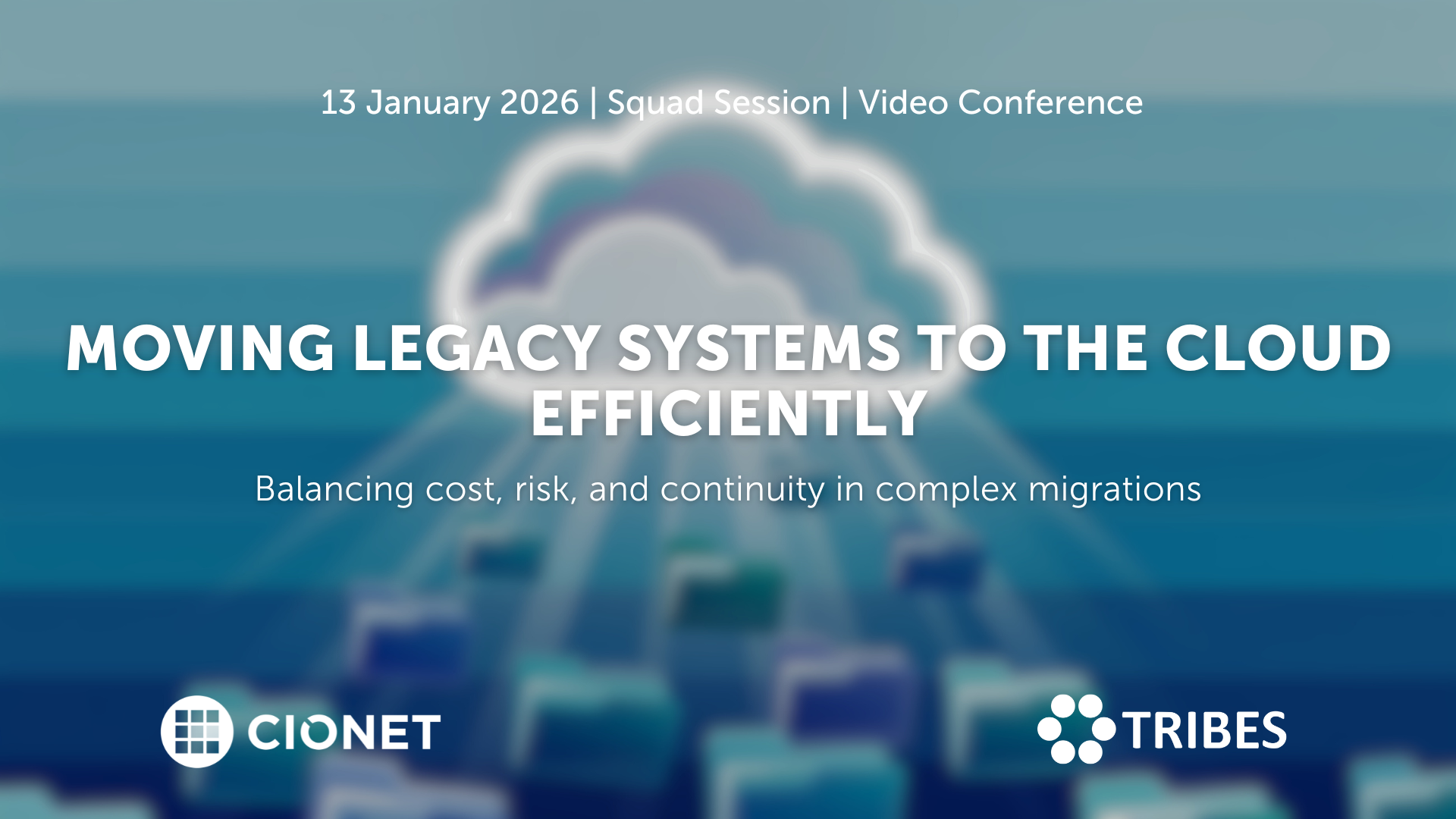
Belgium 13-1-26 Squad Only Virtual english
Migrating legacy systems to the cloud remains one of the toughest balancing acts in IT. Every choice affects stability, cost, and trust at once, and what starts as a modernisation effort quickly turns into a negotiation between ambition and reality. Suddenly budgets rise, dependencies appear late, and timelines tighten as old architectures collide with new expectations. In the end, success depends on sequencing, ownership, and aligning business priorities with infrastructure limits, and not only on technical readiness. Making it work requires more than a plan on paper. Knowing which systems genuinely belong in the cloud, which can wait, and which should stay put shapes the entire roadmap and defines its success. Each refactoring decision sets the level of future flexibility, but it also drives cost and risk. The trade-offs between speed, sustainability, and resilience only become clear once migration begins and pressure builds. Let’s discuss how to plan migrations that stay on track, manage hidden dependencies, and handle downtime with confidence. Let’s also discuss how governance, testing, and vendor coordination keep progress visible and credible. Are you in? A closed conversation for those who turn cloud migration from a disruption into a long-term advantage.
Read More.png)
Belgium 20-1-26 All Members Physical english
CIOs today are being judged less as technology leaders and more as portfolio managers. Every euro is under scrutiny. Boards and CFOs demand lower run costs, higher efficiency, and clear ROI from every digital initiative. Yet, they also expect CIOs to place bets on disruptive technologies that will keep the enterprise competitive in five years. This constant tension is redefining the role. In this session, we go beyond FinOps and cost reporting to tackle the strategic financial dilemmas CIOs face.
Read More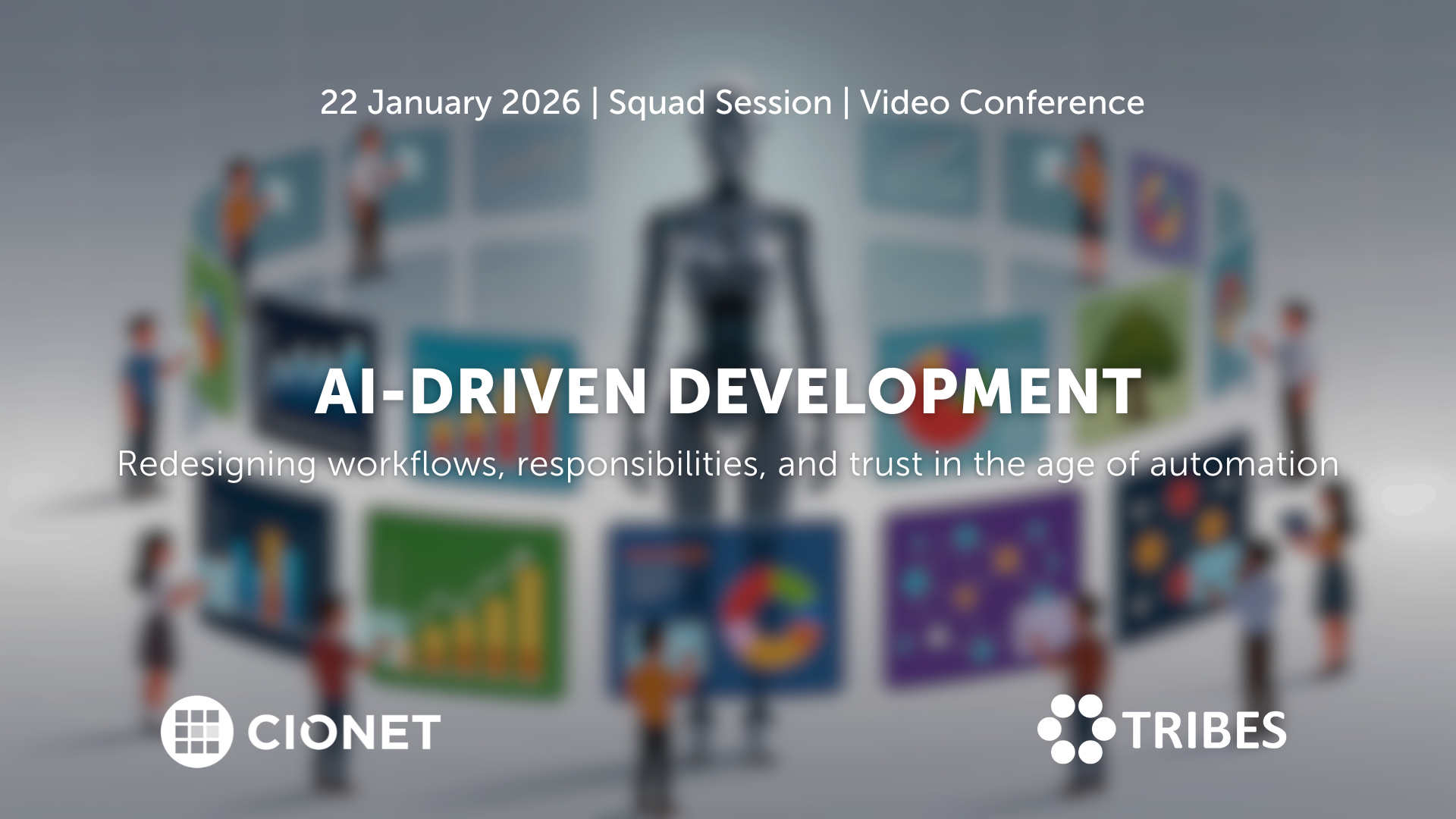
Belgium 22-1-26 Invitation Only Virtual english
AI coding assistants entered development teams quietly, but their impact grows by the day. What started as autocomplete now shapes architecture decisions, documentation, and testing. And when productivity gains are visible, so are new risks: security blind spots, uneven quality, and the slow erosion of shared standards. Teams move faster, but not always in the same direction. The challenge has become integration rather than adoption. And new questions have risen: how do you blend automation into established practices without losing oversight? When is human review still essential, and what should the rules of collaboration between developer and machine look like? As AI tools learn from proprietary code, where do responsibility and accountability sit? Let’s talk about how to redefine those workflows, balancing creativity with control, and protecting code quality in a hybrid human-AI environment. A closed conversation on where AI accelerates progress, where it introduces new debt, and how development culture must evolve to stay credible.
Read More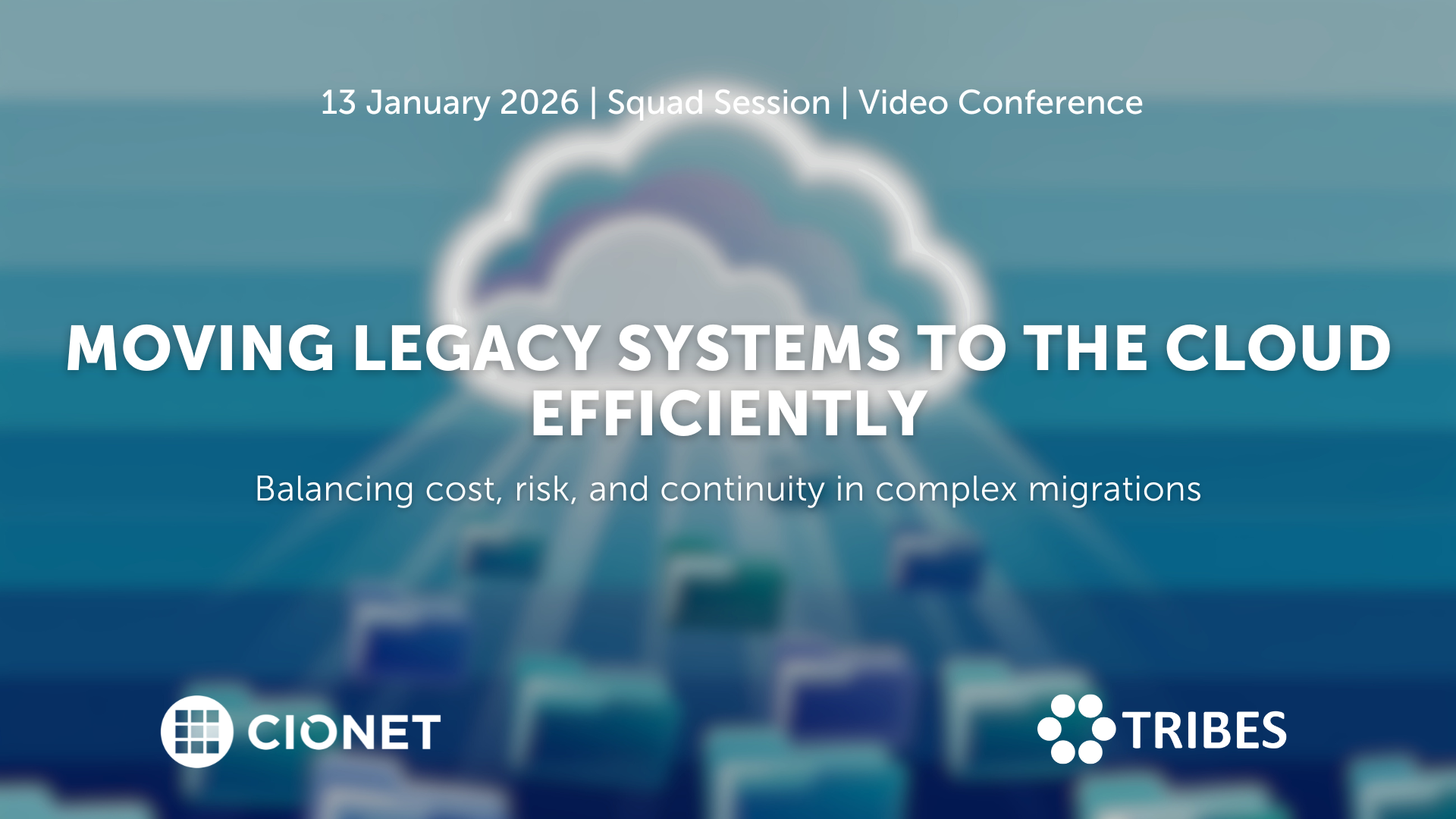
January 13, 2026 Squad Session Invitation Only Virtual english
Migrating legacy systems to the cloud remains one of the toughest balancing acts in IT. Every choice affects stability, cost, and trust at once, and what starts as a modernisation effort quickly turns into a negotiation between ambition and reality. Suddenly budgets rise, dependencies appear late, and timelines tighten as old architectures collide with new expectations. In the end, success depends on sequencing, ownership, and aligning business priorities with infrastructure limits, and not only on technical readiness. Making it work requires more than a plan on paper. Knowing which systems genuinely belong in the cloud, which can wait, and which should stay put shapes the entire roadmap and defines its success. Each refactoring decision sets the level of future flexibility, but it also drives cost and risk. The trade-offs between speed, sustainability, and resilience only become clear once migration begins and pressure builds. Let’s discuss how to plan migrations that stay on track, manage hidden dependencies, and handle downtime with confidence. Let’s also discuss how governance, testing, and vendor coordination keep progress visible and credible. Are you in? A closed conversation for those who turn cloud migration from a disruption into a long-term advantage.
Read More
January 22, 2026 Squad Session Invitation Only Virtual english
AI coding assistants entered development teams quietly, but their impact grows by the day. What started as autocomplete now shapes architecture decisions, documentation, and testing. And when productivity gains are visible, so are new risks: security blind spots, uneven quality, and the slow erosion of shared standards. Teams move faster, but not always in the same direction. The challenge has become integration rather than adoption. And new questions have risen: how do you blend automation into established practices without losing oversight? When is human review still essential, and what should the rules of collaboration between developer and machine look like? As AI tools learn from proprietary code, where do responsibility and accountability sit? Let’s talk about how to redefine those workflows, balancing creativity with control, and protecting code quality in a hybrid human-AI environment. A closed conversation on where AI accelerates progress, where it introduces new debt, and how development culture must evolve to stay credible.
Read More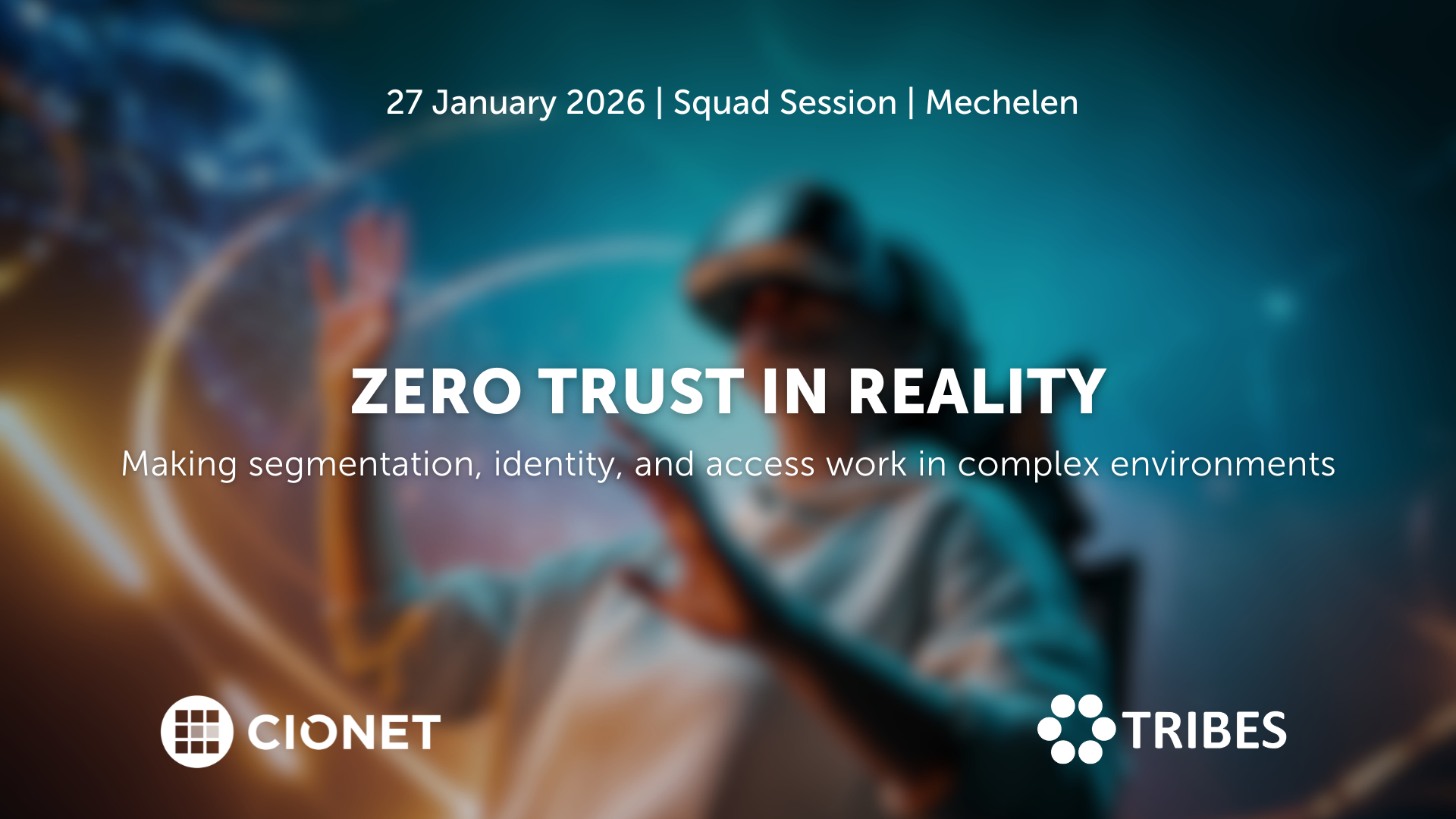
January 27, 2026 Squad Session Invitation Only Physical english
Zero Trust sounds simple on paper: trust no one, verify everything. But once you start implementing it, the fun begins. Legacy systems, hybrid networks, and human habits don’t read the manual. The idea is solid; the execution, not so much.
Read More
CIONET Trailblazer: AI Transformation: Bridging the Cultural Divide to Achieve Competitive Advantage
Published on: December 17, 2025 @ 9:16 AM
Etat du Valais cuts time for digital services provision in 3
To cope with the pressure of more frequent releases, the ITOps shifted to a container approach, starting with Docker and eventually transitioning to Red Hat® OpenShift®. Discovering the Red Hat build of Quarkus and then adopting it has allowed developers to focus on delivering business value, increase test speeds, and cut development time by a 3rd.
The cantonal administration Etat du Valais serves the 345,000 inhabitants of the canton of
Valais in southwestern Switzerland. As digitization climbed its agenda, IT wanted to deliver more
value to the business faster. When more frequent releases put pressure on the IT operations
team, developers switched to a container approach, initially with Docker and later with Red Hat
OpenShift. Discovering the Red Hat build of Quarkus at the Red Hat Summit and subsequently
adopting it has allowed developers to focus on delivering business value and test faster,
cutting development to one 3rd.
Delivering advanced digital services for the citizens of Valais
Situated in southwestern Switzerland, the Valais is one of the 26 cantons forming the Swiss
Confederation. Its population of around 350,000 inhabitants lives across 67 square kilometers
of land, which includes Monte Rosa and Lake Geneva. Etat du Valais, the Valais’ cantonal
administration, has around 40 business units (departments), which cover everything from
finance and energy to security, institutions, and sport.
The cantonal administration is eager to provide its citizens with modern services to meet their
needs and, at the same time, offer the best value. With digitization high on its agenda, IT wanted to
provide value to the business faster. “Our development team adopted an Agile approach and began
delivering new functionality every couple of weeks,” said Steve Favez, Web Architect and Head
of Internet Capability Center at Etat du Valais. However, the more frequent releases put a lot of
pressure on the operations team.
Moving to using containers with Docker empowered the development team to deploy its
applications to production without relying on the operations team. “We started to have more
and more applications deployed on Docker and so began thinking about orchestrating all those
applications,” said Favez. “We moved to Red Hat OpenShift to give us better security and a better
ecosystem, further improving our ability to deliver more and more value to the business.”
Favez and his small team of ten saw that Red Hat OpenShift offered more opportunities to allow
them to deliver more value to the business—and cost-efficiency. “We realized we could save
CPU and memory resources and thus reduce costs by stopping some applications,” said Favez.
“We could switch off applications that are only used for a few months of the year and switch off
our testing and quality control environments if we had nothing under development.”
Restarting an application based on Spring Boot or even the legacy J2EE (Java 2 Enterprise Edition)
framework could take ten or even 20 seconds. This slow startup was wasting time, not only for the
operations team managing the applications but also for the development team updating them.
“When our developers came to test the new functionality they had just written, they were wasting
a lot of time waiting for their application to start running,” said Favez
Adopting a Kubernetes-native Java framework for containerized applications
Favez discovered the perfect solution while attending Red Hat Summit. Full of enthusiasm, on his
return, he presented the Red Hat build of Quarkus—part of Red Hat Application Foundations—to
his team. The Red Hat build of Quarkus is an open source, container-first, Kubernetes-native Java
framework that allows developers to optimize container-native applications. “The Red Hat build of
Quarkus had exactly the capabilities we needed,” said Favez. “It would give us elasticity. It would
allow us to switch applications on and off to save resources. And I wouldn’t need to teach my Java
developers a new language.”
To prove the concept, Favez wrote a small service to scan a file for viruses in just one day.
When he had previously written the service—a RESTful Web API—in Spring Boot, it took 1 week. “We’d
had some issues with the Spring Boot version,” said Favez. “It didn’t manage large files well.
But the Quarkus version worked perfectly.”
redhat.com Case study Etat du Valais cuts time for digital services provision in three 3
With the success of this first proof of concept, which went to production after 1 week, the team
started using the Red Hat build of Quarkus on larger projects. “The result was exactly the same,”
said Favez. “People developed faster. It was easy, and it worked. We now use the Red Hat build of
Quarkus for every new application we write. And we are migrating applications from legacy
frameworks to Quarkus when we have the time.”
Accelerating time-to-market while optimizing costs
Saved operational costs thanks to a smaller footprint
The Red Hat build of Quarkus allows developers to optimize container-native applications for peak
performance. Its small computing resource footprint ensures low memory and CPU consumption,
reducing overall costs.
“We’ve cut our application computing resource usage in three,” said Favez, “because the native mode
of Quarkus is so fast and so light.” In 1 instance, an application the team had written using Spring
Boot required 500 megabytes of memory—but just 50 megabytes with the Red Hat build of Quarkus.
In 2024, the team is planning to take advantage of Knative to become more elastic. Knative
eliminates provisioning and server management tasks, so developers can focus on building business
value. They will be able to create a service by packaging code as a container image and deploying
it on Red Hat OpenShift, and it will only run when its needed; Knative automatically starts and
stops instances. This will ensure computing resources aren’t consumed unless the code needs
to do something.
Existing Quarkus applications have been built in native mode, making them Knative-ready and easy
to deploy on the platform in the future.
Reduced cluster usage by 40%, making room for new workloads
With those applications having a significantly smaller footprint using the framework of Red Hat’s
build of Quarkus, operations can now run additional meaningful workloads on their existing Red Hat
OpenShift cluster. Spring Boot would require a cluster up to 40% larger than Red Hat’s build
of Quarkus.
“Quarkus has brought a big improvement to our Red Hat OpenShift cluster,” said Favez. “Operations
don’t have to add new nodes when we deploy more applications. We are deploying more and more
applications, and we are not using our entire cluster. We can continue to deliver things without having
to increase the size of our Red Hat OpenShift cluster.”
Increased developer productivity threefold
The fast startup times of Red Hat’s build of Quarkus’ have helped Etat du Valais significantly
reduce development time. “With Red Hat Quarkus, we’ve cut development time by three compared
to using our old J2EE server eight years ago,” said Favez. “Our developers can write their code faster,
and they can test it faster too.”
Developers no longer have to wait for their applications to restart each time they test it—they can
now code and test it straight away.
Favez also commented that developers can now focus on creating business value because
Red Hat’s build of Quarkus natively provides technical functionality. “Quarkus gives developers
the code needed to invoke a web service, for instance,” said Favez. “They can really focus on the
business functionality because they don’t have to write the low-level code.”
Ensured an easy transition from Spring and J2EE for Java developers
Switching from the Spring Boot and J2EE frameworks to Red Hat’s build of Quarkus was really easy
for Etat du Valais’ developers. “Red Hat Quarkus is still Java,” said Favez. “It uses a language that my
team was already familiar with. So, it was no big deal to move from J2EE or Spring Boot to Red Hat
Quarkus. It was really easy. There is nothing new for them.”
Despite not having any previous experience with Quarkus, Favez rewrote an API that had taken a
week to write in Spring Boot in just one day. “The documentation of Quarkus is just perfect and really
easy to understand. This API was working better than the one we wrote in Spring Boot,” said Favez.
“We had it in production within a week.”
Expanding success to business units and partners
Etat du Valais’ central development team is so happy with the Red Hat build of Quarkus that Favez
doesn’t need to mandate that they use it, even though he has stipulated that any new application will
be written using the Quarkus framework. He is instead encouraging developers within the business
units and third-party providers to use it.
“Not every provider is using Quarkus; most are still using Spring Boot or J2EE frameworks,”
said Favez. “We are telling them, ‘please use frameworks that use less memory. Quarkus is a good
solution.’ We say that we are really gaining a lot from it, and they will gain something too if they use
it to develop applications for us.”
In its effort to do more with less, the administration plans to also adopt Red Hat Ansible®
Automation
Platform for automatically provisioning and changing systems. “Automation with Ansible Automation
Platform will be really important for Etat du Valais,” said Favez.
With integration high on the agenda, the administration also has Red Hat AMQ Streams to its
roadmap. Red Hat AMQ streams is Red Hat’s implementation of the Apache Kafka project and, like
the Red Hat build of Quarkus, is part of Red Hat Application Foundations and includes the Apache
Camel and Camel on Quarkus integration frameworks, among other technologies for connecting
applications and data. “Red Hat has made it easy for us to install and use these important integration
tools on our Red Hat OpenShift clusters,” said Favez.
The open source solutions provided by Red Hat meet the many needs of today’s organizations: “
Red Hat really understands development and operational teams’ requirements,” said Favez.
“Doing more with less is a requirement for every team, every company. And Red Hat provides
all the tools that we need to do that, and they do it well.”
About Etat du Valais
The Valais cantonal administration (Etat du Valais) is 1 of the largest employers in Valais and offers
jobs in 40 different departments and in around 150 different professions. Every day, employees use
their diverse skills to help shape the high quality of life and the future of the canton.
297 Views 0 Likes Read More

Digital Transformation is redefining the future of health care and health delivery. All stakeholders are convinced that these innovations will create value for patients, healthcare practitioners, hospitals, and governments along the patient pathway. The benefits are starting from prevention and awareness to diagnosis, treatment, short- and long-term follow-up, and ultimately survival. But how do you make sure that your working towards an architecturally sound, secure and interoperable health IT ecosystem for your hospital and avoid implementing a hodgepodge of spot solutions? How does your IT department work together with the other stakeholders, such as the doctors and other healthcare practitioners, Life Sciences companies, Tech companies, regulators and your internal governance and administrative bodies?
Read More
The Telenet Business Leadership Circle powered by CIONET, offers a platform where IT executives and thought leaders can meet to inspire each other and share best practices. We want to be a facilitator who helps you optimise the performance of your IT function and your business by embracing the endless opportunities that digital change brings.
Read More
Découvrez la dynamique du leadership numérique aux Rencontres de CIONET, le programme francophone exclusif de CIONET pour les leaders numériques en Belgique, rendu possible grâce au soutien et à l'engagement de nos partenaires de programme : Deloitte, Denodo et Red Hat. Rejoignez trois événements inspirants par an à Liège, Namur et en Brabant Wallon, où des CIOs et des experts numériques francophones de premier plan partagent leurs perspectives et expériences sur des thèmes d'affaires et de IT actuels. Laissez-vous inspirer et apprenez des meilleurs du secteur lors de sessions captivantes conçues spécialement pour soutenir et enrichir votre rôle en tant que CIO pair. Ne manquez pas cette opportunité de faire partie d'un réseau exceptionnel d'innovateurs numériques !
Read More
CIONET is committed to highlighting and celebrating female role models in IT, Tech & Digital, creating a leadership programme that empowers and elevates women within the tech industry. This initiative is dedicated to showcasing the achievements and successes of leading women, fostering an environment where female role models are recognised, and their contributions can ignite progress and inspire the next generation of women in IT. Our mission is to shine the spotlight a little brighter on female role models in IT, Tech & Digital, and to empower each other through this inner network community.
Read More


-Apr-01-2022-10-58-34-57-AM.png)





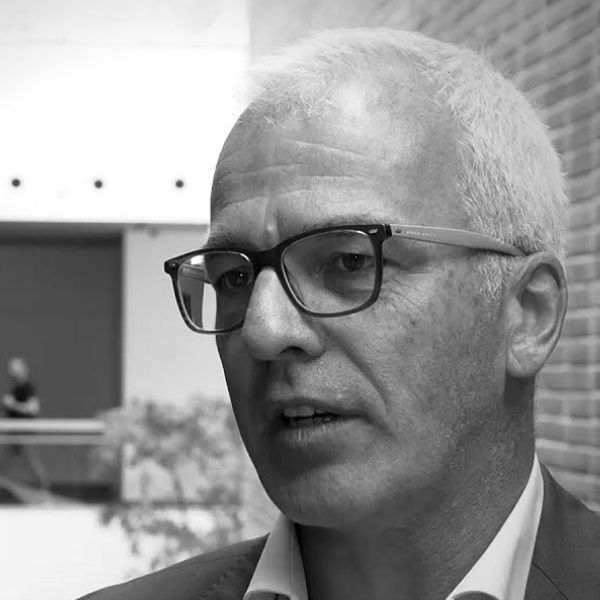





-Dec-13-2023-10-53-15-5032-AM.png)




-Jun-12-2023-01-23-11-7540-PM.png)





-Apr-01-2022-10-58-34-68-AM.png)










-2.jpg)




-Sep-01-2022-02-47-55-60-PM.png)
-Nov-22-2023-08-56-42-6802-AM.png)
.png)

Would you like to know more about CIONET Belgium, membership or partnership opportunities? Do you have feedback or any other question? Send us a message!
You can either send us a registered handwritten letter explaining why you'd like to become a member or you can simply talk to us right here!